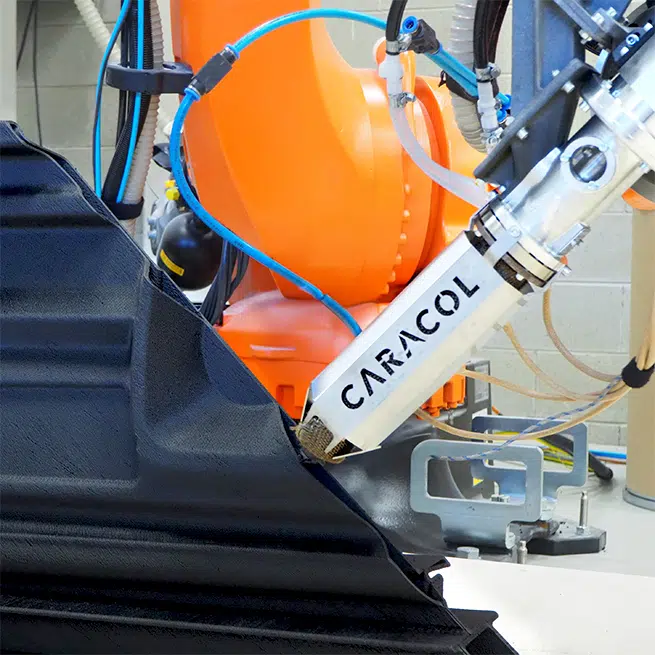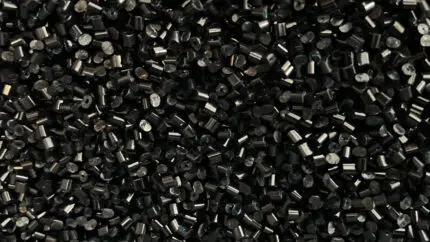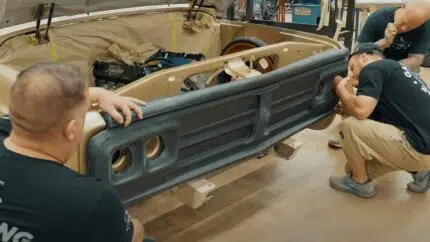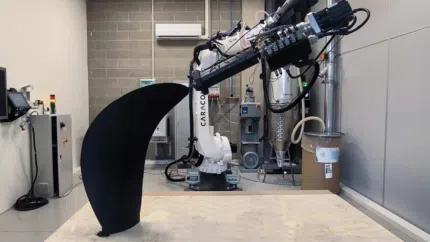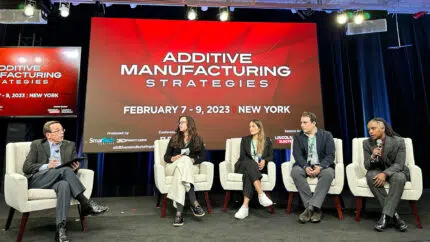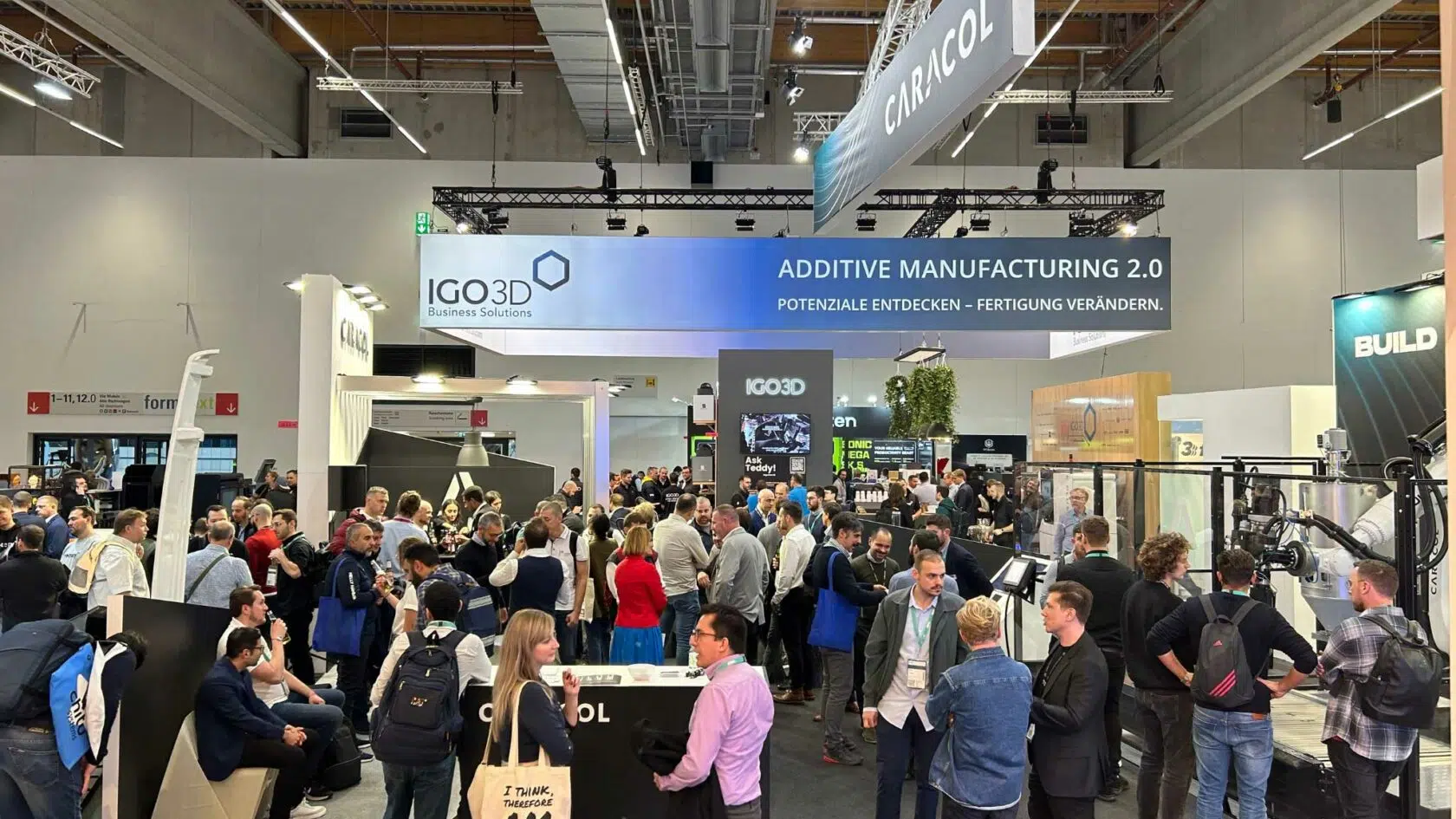
On November 8th, at Formnext, in Frankfurt, Caracol hosted a panel of leading companies in the Large Format Additive Manufacturing sector to discuss the evolution of this market segment
With the aim of having several representatives across the value chain of LFAM share their points of view about materials, software, hardware, and service, the panel was attended by many. The event expressed Caracol’s firm belief that partnerships, collaboration, sharing of knowledge and ideas between key players in this segment will foster growth for both providers and end-users of LFAM technologies, who’ll ultimately be able to quickly achieve their 3D printing goals on large-scale parts.
The panel speakers, moderated by Caracol’s CEO Francesco De Stefano, included the CEO of the French-Swedish robotics software company Adaxis; the CEO of the UK-based AM software-as-a-service company Ai Build; the Director of Additive Manufacturing for Airtech, the largest manufacturer of vacuum bagging and composite tooling materials also for 3D printing; the Additive Manufacturing Lead for CMS S.p.A., key manufacturer of industrial machinery for the processing of a wide variety of materials; the CEO of the US manufacturer of FDM and FGF printers Filament Innovation; and the CEO of Solidtech, Portuguese 3D service provider, specialized in manufacturing small series plastic parts.
They all discussed the growth experienced in the past few years and what each company believes will be the developments in the years ahead, providing their perspective on the potential of LFAM for industrial applications.
Solidtech, the Portuguese service bureau and Caracol’s Manufacturing Partner, showed how it started substituting subtractive technologies like milling and water jet milling with 3D printing for tooling in the transportation industries, a few years ago. Using Heron AM, they print large-scale tools and molds for the automotive industry overnight, in a faster and cheaper way compared to traditional manufacturing. New perspectives in daily business come from new applications to experiment together with customers, for example in the consumer electronics and automotive industries. New frontiers such as replacing metal parts with 3D printed components or using not-planar printing paths are explored in collaboration with Caracol. The two companies’ strong know-how merges to support clients with their innovative projects, leading to new LFAM applications.
According to CMS SpA, the Italian group manufacturing CNC machines, several advantages come from the integration of the two technologies within the same manufacturing process. 3d printing large format advanced components and post-finishing them with CNC leads to very low material waste – including the possibility to use recycled materials, and shorter production time, while it guarantees the same finishing quality and tolerances of traditional milling technologies.
AI Build described the current scenario of the LFAM segment: following the proof of concept of LFAM technologies, we are now in a more mature phase, dealing with scalability. How can we make the AM process simpler and more optimized when repeated over time? In this scenario, monitoring software solutions, that collect data and analyze them, are important to scale the business and improve the quality of 3D printing process at the same time. AI Build is working on facilitating difficult tool paths like not-planar printing and very edgy corners printing through AI features, that can mitigate the extremely strong dependency from high-skilled operators.
Caracol’s US partner Filament Innovation, pinpointed that the latest advanced materials on the market show the pellet form’s printability is higher in terms of reliability, grain quality, and costs, if compared to filament-form materials. Low resolution isn’t an issue for pellet printers anymore, thanks to the great evolution of large-format extruding technologies. So, end-users can achieve high-details perfectly comparable to the FDM 3D printing process, while applying new, even better-performing materials. Consumers’ confidence can be higher with pellet materials too, thanks to their gains in terms of costs, production times, and even materials’ reliability in case of complicated supply chains and remotely located production sites.
Supporting customers to get the best out of Airtech Dahltram materials from many perspectives, including 3d printing hardware and software, is key to this materials supplier’s business. To support customers’ applications, making them even more confident about the actual possibilities of LFAM in their industries, is crucial not to slow down the adoption while increasing the extensive use of LFAM technologies by industrial end-users. In this scenario, the collaboration amongst the key LFAM players within the whole value chain is becoming more and more urgent to define guidelines and standards that could help and reassure end-users at the same time, speeding up the acquisition and retention of 3d printing technologies for large-scale part production.
For the French-based software company Adaxis, connecting the dots is a great effort to do daily, starting from 3d printing machines and materials, to process and software. Collaboration with LFAM technological providers and direct customers such as OEMs is important to gather as much information as possible that will finally allow to oversee and manage all different aspects of different 3d printing technologies and processes applied to diverse industrial cases. By doing so, Adaxis aims to automatize some steps of the Additive Manufacturing process, to make it simpler, from design and engineering to production.
